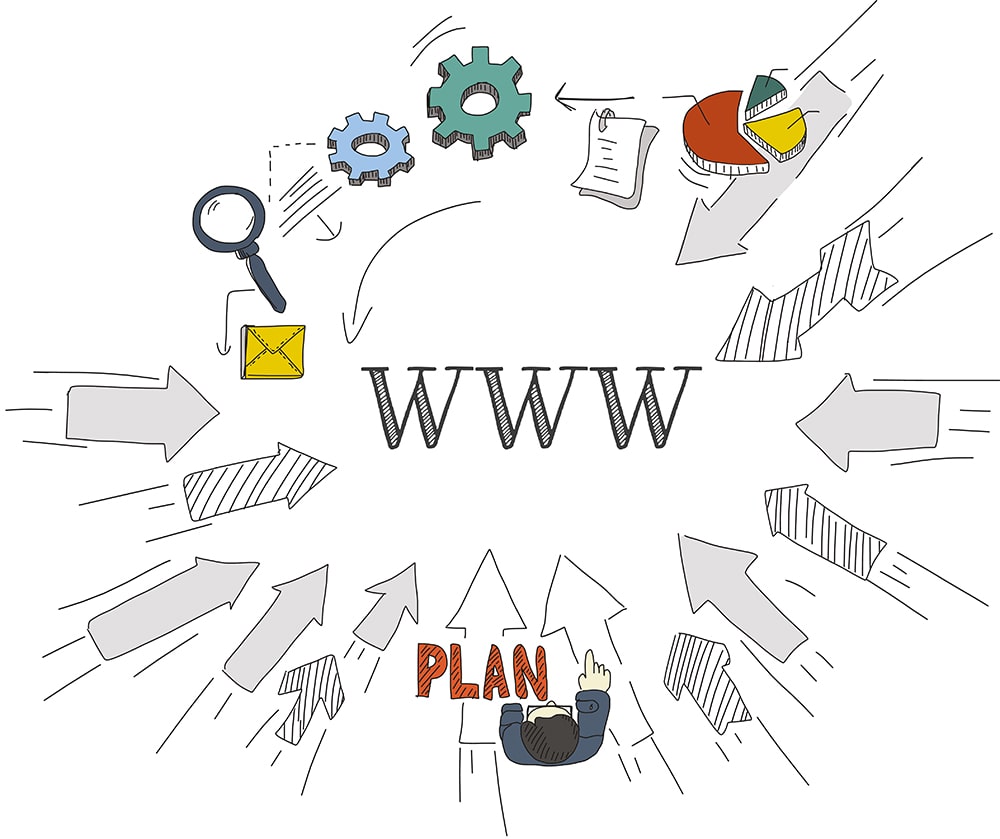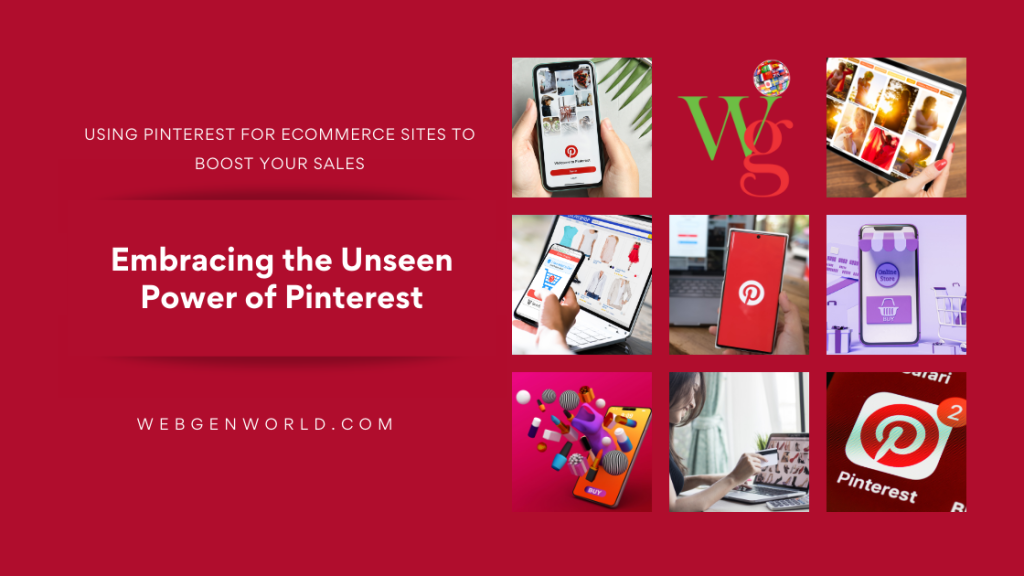Top Ecommerce Website Design Ideas & Trends
Ecommerce website design is integral for the success of any online retail business. With the exponential growth of ecommerce, having an engaging and conversion-focused website design is crucial to stand out from the competition.
As per industry experts like Dave Chaffey and Ezra Firestone, the website serves as the digital storefront for brands, so the design must effectively communicate the product value and brand story.
With innovation advancing rapidly, ecommerce design trends are ever-evolving. As Mark Lewis highlights, the ecommerce website design ideas that work today may become outdated by next year. So brands need to stay updated with the latest trends and technologies to craft experiences that resonate with their target audience.
By leveraging the top design trends of 2024 outlined in this article across elements like personalization, mobile optimization, visual content and more, ecommerce businesses can boost engagement and sales.
In the ever-evolving digital landscape, the significance of ecommerce website design ideas cannot be overstated. The design of an online store plays a pivotal role in attracting customers, enhancing user experience, and ultimately driving conversions. As we approach 2024, the world of ecommerce is set to witness a myriad of design trends that will shape the way online businesses present themselves to their audience.
In this comprehensive guide, we’ll explore the top ecommerce website design ideas and trends for 2024, drawing insights from leading experts and industry pioneers.

User-Centric Design
Industry leaders emphasize that Ecommerce Website Design should revolve around the users’ needs and preferences. As conversion expert Peep Laja states, optimizing for ease of use through concise and consistent information architecture essentially allows shoppers to “find the exit themselves”.
Here are key elements in building user-centric ecommerce website designs:
Importance of Prioritizing User Experience
User experience (UX) remains at the forefront of ecommerce website design considerations. The success of an online store hinges on how seamlessly users can navigate, find products, and complete transactions. In 2024, designers are placing an even greater emphasis on creating intuitive and user-friendly interfaces that cater to the diverse needs of shoppers.
Simplifying navigation, optimizing page load speeds and creating easy checkouts enhance site usability. UX thought leader Steve Krug’s philosophy of “Don’t make me think” should drive all design decisions.
Responsive Design for Various Devices
With the proliferation of smartphones and tablets, a responsive design is no longer a luxury but a necessity. Ecommerce websites must adapt seamlessly to different screen sizes and resolutions to provide a consistent and enjoyable user experience across devices.
As Google’s John Mueller highlights, over 50% of traffic comes from mobile devices so responsive sites must adapt seamlessly to phone, tablets, desktops and beyond.
Integration of Intuitive Navigation
Streamlining the navigation process is a key element in enhancing user experience. Intuitive navigation ensures that visitors can effortlessly find what they’re looking for, reducing bounce rates and increasing the likelihood of conversion. Ecommerce Store Designers are exploring innovative ways to present product categories, filters, and search functionalities for a frictionless shopping journey.
Navigation plays a big role in user experience. Sujan Patel suggests using descriptive and consistent navigation schemes. Components like breadcrumbs further aid site interactions.
Visual Appeal
Incorporating visually enticing elements is key to communicating brand value. According to conversion rate expert Tommy Walker, attractive visual design makes users more inclined to take action.
Key visual design trends include:
Use of Engaging Visuals and High-Quality Images
The saying “a picture is worth a thousand words” holds true in the ecommerce realm. High-quality product images and engaging visuals are instrumental in capturing the attention of online shoppers. In 2024, we anticipate a surge in the use of visually stunning imagery that not only showcases products but also tells a compelling story about the brand.
High-quality photos and videos that showcase products uniquely help drive sales. Tools like heat mapping identify effective visual placements.
Product videos: Incorporation of Video Content for Product Showcasing
Video content continues to gain prominence in ecommerce website design. From product demonstrations to brand storytelling, videos provide a dynamic and immersive way for customers to interact with products. Forward-thinking designers are leveraging the power of video to create engaging and informative shopping experiences.
Mark Lewis states that short, eye-catching product videos can boost conversion rates by up to 144%. Such videos allow showcasing products in action.
Creative Use of Color Schemes and Typography
The strategic use of color schemes and typography can significantly impact the overall aesthetics of an ecommerce website. Designers are experimenting with bold color choices, gradients, and unique typography to create visually appealing and memorable brand identities.
Thoughtful typography and colour choices strengthen brand image. Contrasting schemes and minimalist fonts also improve readability.
Personalization
Personalized shopping experiences are becoming expected by customers. Smart Insights founder Dave Chaffey views personalization as promoting self-service and convenience for customers.
Effective personalization elements include:
Customization for a Personalized Shopping Experience
In the era of personalization, ecommerce websites are evolving to cater to individual preferences. Designers are implementing customization features that allow users to tailor their shopping experience. From personalized product recommendations to customizable interfaces, personalization is at the forefront of design strategies for 2024.
Tailoring product recommendations through AI like DefShop’s virtual assistant increases purchases by 15%, shares Darren Rowse.
Implementation of AI-Driven Recommendations
Artificial Intelligence (AI) is revolutionizing the ecommerce landscape, and design is no exception. AI-driven recommendation engines analyze user behavior, purchase history, and preferences to provide highly relevant product suggestions. This not only enhances the user experience but also contributes to increased conversion rates.
Powerful algorithms analyze buyer behaviour to provide tailored suggestions throughout the purchase funnel.
Dynamic Content Based on User Preferences
Dynamic content that adapts based on user preferences is becoming a cornerstone of ecommerce website design. Designers are exploring ways to dynamically adjust product displays, promotions, and content to align with the unique tastes and interests of individual shoppers.
Displaying personalized promotions and matching content based on interests/demographics keeps users engaged.

Mobile Optimization
Industry research shows over 70% of ecommerce traffic comes from mobile devices. Hence brands must embrace mobile-first strategies.
Key mobile ecommerce design trends include:
Emphasis on Mobile-Friendly Design
As the majority of online traffic comes from mobile devices, ensuring a mobile-friendly design is paramount. Designers are focusing on creating layouts and functionalities that are not only responsive but specifically optimized for mobile interactions. Mobile-friendly design directly impacts search rankings and user satisfaction.
Tyler Tringas suggests optimizing page speed, using tap targets properly and keeping forms simple to aid usability.
Accelerated Mobile Pages (AMP) for Faster Loading
In the quest for faster loading times, Accelerated Mobile Pages (AMP) are gaining popularity. AMP technology ensures that ecommerce websites load swiftly on mobile devices, reducing bounce rates and providing users with a seamless and speedy browsing experience.
AMP technology by Google displays mobile pages instantly. This can improve conversion rates by over 20%, reveals Neil Patel.
Mobile-First Approach in Design Strategy
A mobile-first approach is not just a trend but a strategic design philosophy. Designers are prioritizing the mobile experience during the development process, recognizing that an exceptional mobile design is often indicative of a robust overall design strategy.
Crafting the mobile experience first ensures critical elements stand out on smaller screens. Scrolling, gestures and thumb zones should be considered.

Minimalistic Design
Minimalism will continue trending in 2024 website design believes industry expert Sabri Suby. By removing visual clutter, brands allow users to focus on core products/services.
Key minimalistic design elements are:
Streamlined and Clutter-Free Layouts
Minimalistic design continues to be a prevailing trend in 2024. Clean and clutter-free layouts contribute to a visually pleasing user experience, allowing the focus to remain on essential elements such as product offerings and calls to action.
Spacing out sections, embracing negative space and avoiding clutter boosts user-friendliness. Stock photos should blend with brand aesthetics.
Focus on Essential Elements and Information
In a world where attention spans are increasingly limited, minimalistic design focuses on presenting only essential information. This approach helps users quickly grasp the key features of a product or service without feeling overwhelmed by excessive details.
Content should be concise and scannable. Typography, color and space help articulate information clearly.
Embracing Simplicity for Improved User Engagement
Simplicity is the key to improved user engagement. Minimalistic design not only enhances visual appeal but also contributes to faster load times, a factor that significantly impacts user satisfaction. Designers are embracing simplicity as a strategy for capturing and retaining user attention.
Easy interactions allow shoppers to evaluate offerings efficiently. Contrast, scale and visual balance aid simplicity.
Storytelling through Design
Brand storytelling evokes emotion that amplifies customer connections believes April Dunford.
Impactful storytelling design includes:
Integration of Brand Storytelling in the Design
In 2024, ecommerce design goes beyond aesthetics; it tells a compelling story. Brands are recognizing the power of narrative in forging emotional connections with customers. Designers are integrating brand storytelling elements seamlessly into the website interface, creating an immersive journey for visitors.
Cohesive messaging across company history, vision statements and branding allow deeper consumer insight into the “why” behind brands according to Steve Chou.
Use of Visual Narratives to Connect with Customers
Visual narratives, such as image sliders, interactive graphics, and animated storytelling elements, are becoming integral to ecommerce website design. These elements go beyond static visuals, engaging users in a dynamic and storytelling experience that resonates with the brand’s identity.
Photos, illustrations and videos that take users “behind-the-scenes” build product value. User-generated content also boosts authenticity.
Creating an Emotional Connection through Design Elements
Design is a powerful tool for evoking emotions. Elements such as color psychology, imagery, and even micro-interactions are carefully curated to create an emotional connection with users. Designers are leveraging emotional design principles to enhance brand loyalty and customer retention.
Consistent personality and tone coupled with subtle animations make interactions more lifelike, shares Gregg Witt. This cultivates community and nostalgia.
Integration of Social Commerce
Social platforms are now an integral part of ecommerce experiences as they enable community connections.
Effective ways to integrate social elements are:
Seamless Integration of Social Media Elements
Social media integration is no longer an afterthought but a central component of ecommerce design. Designers are seamlessly incorporating social media elements, allowing users to share products, reviews, and experiences directly from the website. This integration enhances brand visibility and fosters a sense of community.
Incorporating sign-in via social platforms or leveraging profiles to personalize experiences aids convenience states Sujan Patel.
Social Sharing Buttons and User-Generated Content
Design trends for 2024 include the strategic placement of social sharing buttons, encouraging users to share their favourite products with their networks. User-generated content, such as customer reviews and social proof, is prominently displayed to build trust and authenticity.
Placement of share icons helps brands gain exposure advises Hiten Shah. This further inspires UGC and positive word-of-mouth.
Building a Community Around the Brand through Design
Successful ecommerce websites are not just transactional; they are community hubs. Designers are actively working on creating spaces within the website where customers can engage with each other, share experiences, and become part of a larger brand community.
Tools like forums, reviews and gamification create loyal brand advocates reveals internet Retailing thought leader Chris Petersen.

Sustainability in Design
Sustainable production is gaining prominence so green branding in design is essential believes industry expert Casie Stewart.
Strategic elements include:
Eco-Friendly Design Practices
As environmental consciousness grows, sustainability is a key consideration in ecommerce website design. Ecommerce Website Designers are opting for eco-friendly practices, including the use of renewable resources, energy-efficient hosting, and minimizing the environmental impact of digital design.
Responsible material sourcing, low energy processes and carbon-neutral logistics should be highlighted in design.
Use of Sustainable and Recyclable Materials in Visuals
The visuals presented on ecommerce websites are now curated with sustainability in mind. From product images to promotional banners, designers are opting for visuals that reflect a commitment to sustainability, using recyclable materials and eco-conscious imagery.
Spotlights on eco-friendly fabrics communicate values without compromising aesthetics.
Communicating the Brand’s Commitment to Sustainability through Design
Beyond visuals, the design itself communicates a brand’s commitment to sustainability. Clear messaging, eco-friendly icons, and transparent information about sustainable practices are woven into the design to resonate with environmentally conscious consumers.
Infographics on positive business impact make the brand’s focus clear. Eco badges and certifications add credibility.
Emerging Technologies
Immersive and smart technologies are reshaping shopping asserts Tyler Tringas. Integrating innovations appropriately helps retailers gain competitive edges believes industry analyst Chris Dessa.
Notable technological directions are:
Implementation of Augmented Reality (AR) and Virtual Reality (VR)
The integration of augmented reality (AR) and virtual reality (VR) is transforming the ecommerce landscape. In 2024, designers are exploring ways to implement AR and VR for virtual try-ons, immersive product experiences, and interactive shopping environments.
AR allows customers to digitally visualize products in their actual spaces prior to purchase.
Integration of Voice Commerce Features
Voice commerce is gaining traction, and ecommerce websites are adapting to accommodate voice-activated features. Designers are incorporating voice search, voice commands, and voice-driven navigation to enhance accessibility and convenience for users.
Early adopters should build capabilities for search/purchases via voice assistants advises Neil Patel.
Incorporating the Latest Tech Trends for a Futuristic Shopping Experience
To stay ahead, ecommerce websites are embracing the latest tech trends. From AI-driven chatbots for customer support to blockchain technology for secure transactions, designers are incorporating futuristic elements that redefine the online shopping experience.
Retailers can stand out by incorporating AI stylists, VR showrooms and magic mirrors to enable interactive explorations.
Conclusion: Ecommerce Website Design Ideas & Trends for 2024
Recap of Key Ecommerce Website Design Ideas & Trends for 2024
In summary, the landscape of ecommerce website design ideas for 2024 is characterized by a dynamic interplay of user-centric principles, captivating visuals, personalization strategies, and the integration of cutting-edge technologies. From prioritizing seamless user experiences to embracing sustainability and emerging tech trends, designers are at the forefront of shaping the future of online commerce.
Encouragement to Stay Adaptive and Innovative in Design Strategies
As we navigate the intricate realm of ecommerce, one resounding theme emerges: adaptability is key. Designers and businesses alike must remain agile in response to evolving consumer preferences, technological advancements, and societal shifts. Staying abreast of the latest trends ensures that ecommerce websites not only meet but exceed user expectations.
Closing Remarks on the Significance of Staying Updated
In the ever-evolving ecommerce landscape, the only constant is change. As we look toward 2024 and beyond, the role of ecommerce website design is poised to become even more integral to the success of online businesses. By staying updated on the latest trends, incorporating innovative strategies, and listening to the needs of consumers, ecommerce websites can forge ahead into the future with confidence.
Ecommerce website design ideas & innovations are rapidly transforming shopping journeys. User centricity, personalization and storytelling will be integral for customer connections in 2024 projects Sabri Suby. By blending visual appeal with utility and convenience across devices, brands can craft memorable experiences that engage audiences.
Ultimately agility and constant optimization as per the latest technologies and customer preferences will determine ecommerce success believes industry leader Gail Gardner. So, retailers must actively educate themselves on upcoming ideas and renew their digital presence accordingly. By keeping their fingers on the pulse of design innovation, online retailers can stay both relevant and remarkable even in an intensely competitive space.
In conclusion, the journey of ecommerce website design is a perpetual quest for excellence, where each trend, innovation, and design element contribute to creating a compelling and unforgettable online shopping experience.



